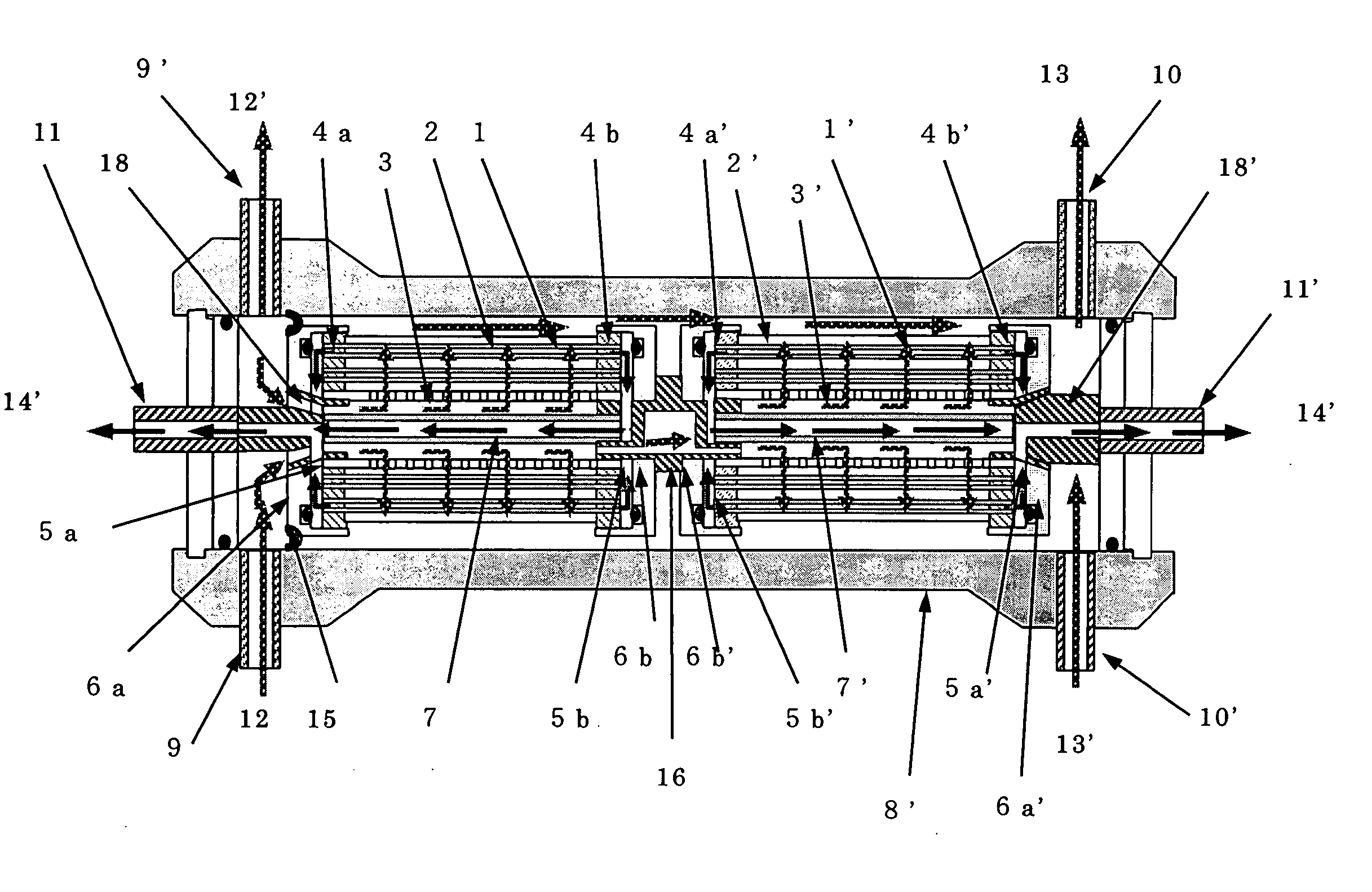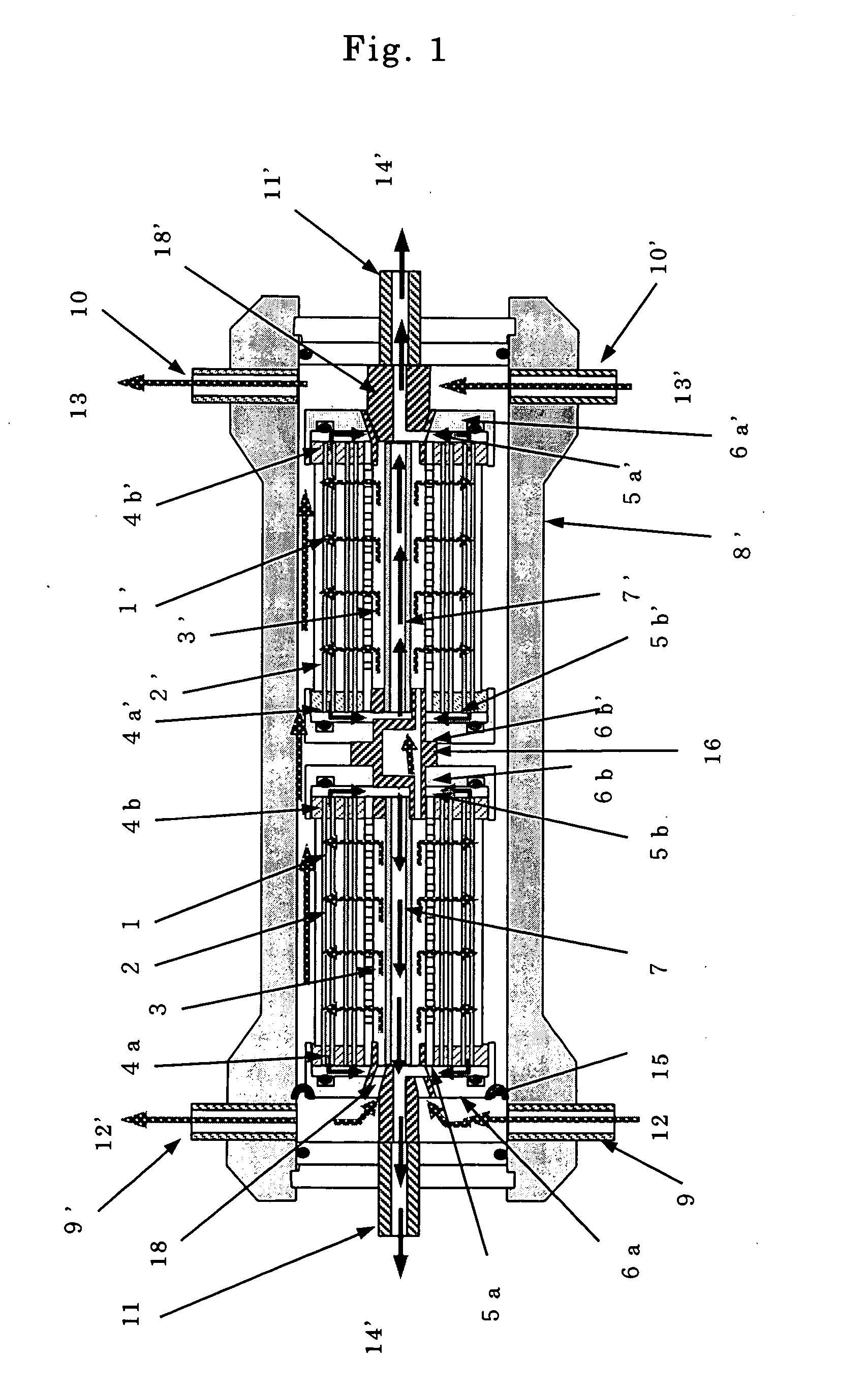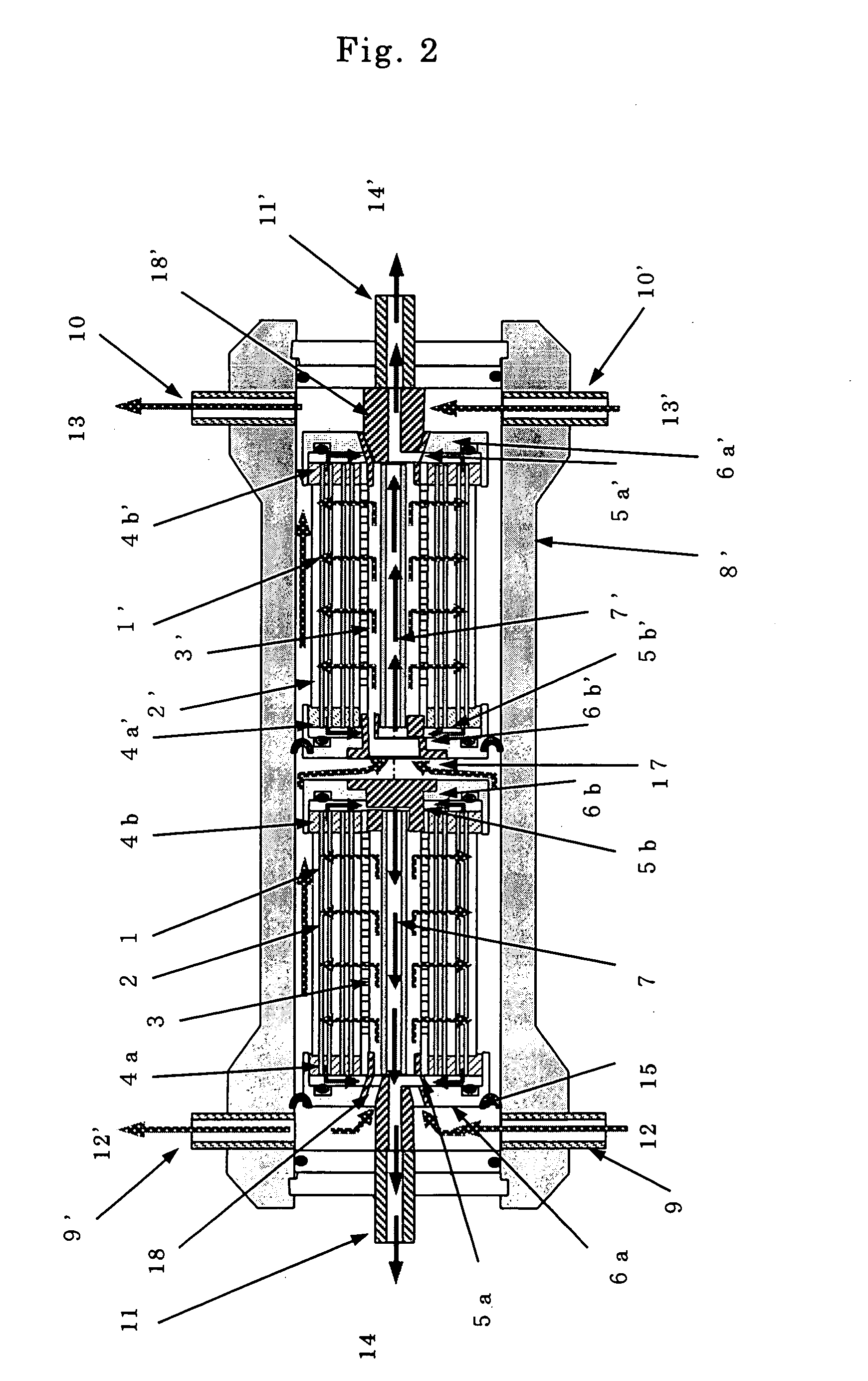Hollow fiber membrane module and module arrangement group thereof
a technology of hollow fiber membrane and module, applied in the field of can solve the problems of increasing the piping space and cost of parts other than hollow fiber membrane modules, difficult to effectively use supply pressure, and high cost and piping space, so as to prolong the membrane life, reduce the frequency of exchanging hollow fiber membrane elements, and reduce the effect of pressure drop
- Summary
- Abstract
- Description
- Claims
- Application Information
AI Technical Summary
Benefits of technology
Problems solved by technology
Method used
Image
Examples
example 1
(Production of Hollow Fiber Membranes)
[0098] Forty parts by weight of cellulose triacetate (acetylation degree: 61.4) was mixed with a solution composed of 18 parts by weight of ethylene glycol and 42 parts by weight of N-methyl-2-pyrrolidone, and the mixture was heated to obtain a solution for forming membranes. The solution was degassed under reduced pressure, and then discharged from a nozzle to travel through the air into a coagulating liquid composed of 65 parts by weight of water at 14° C., 10.5 parts by weight of ethylene glycol and 24.5 parts by weight of N-methyl-2-pyrrolidone, to thereby form hollow fibers. Subsequently, the hollow fiber membranes were washed with water at normal temperature to remove excessive solvent and nonsolvent, and then treated with hot water. Thus, hollow fiber reverse osmosis membranes made of cellulose triacetate membranes were produced.
[0099] The obtained hollow fiber membranes had an outer diameter of 137 μm and an inner diameter of 53 μm. T...
example 2
[0102] A hollow fiber membrane module arrangement group as shown in FIG. 4 was formed from six hollow fiber membrane modules produced in the same manner as in Example 1. Feed fluid pipe portions and concentrated fluid pipe portions that were designed for use under high pressures were limited to the portions for connecting the hollow fiber membrane modules. Since high pressure-pipes were used only for the connecting portions, the lengths of such pipes were 0.5 m for the feed fluid, and 0.5 m for the concentrated fluid. Neither header pipes nor branch pipes were necessary.
PUM
 Login to View More
Login to View More Abstract
Description
Claims
Application Information
 Login to View More
Login to View More - R&D
- Intellectual Property
- Life Sciences
- Materials
- Tech Scout
- Unparalleled Data Quality
- Higher Quality Content
- 60% Fewer Hallucinations
Browse by: Latest US Patents, China's latest patents, Technical Efficacy Thesaurus, Application Domain, Technology Topic, Popular Technical Reports.
© 2025 PatSnap. All rights reserved.Legal|Privacy policy|Modern Slavery Act Transparency Statement|Sitemap|About US| Contact US: help@patsnap.com



